Just About Everything You Need To Know About the 2020 Toyota Supra
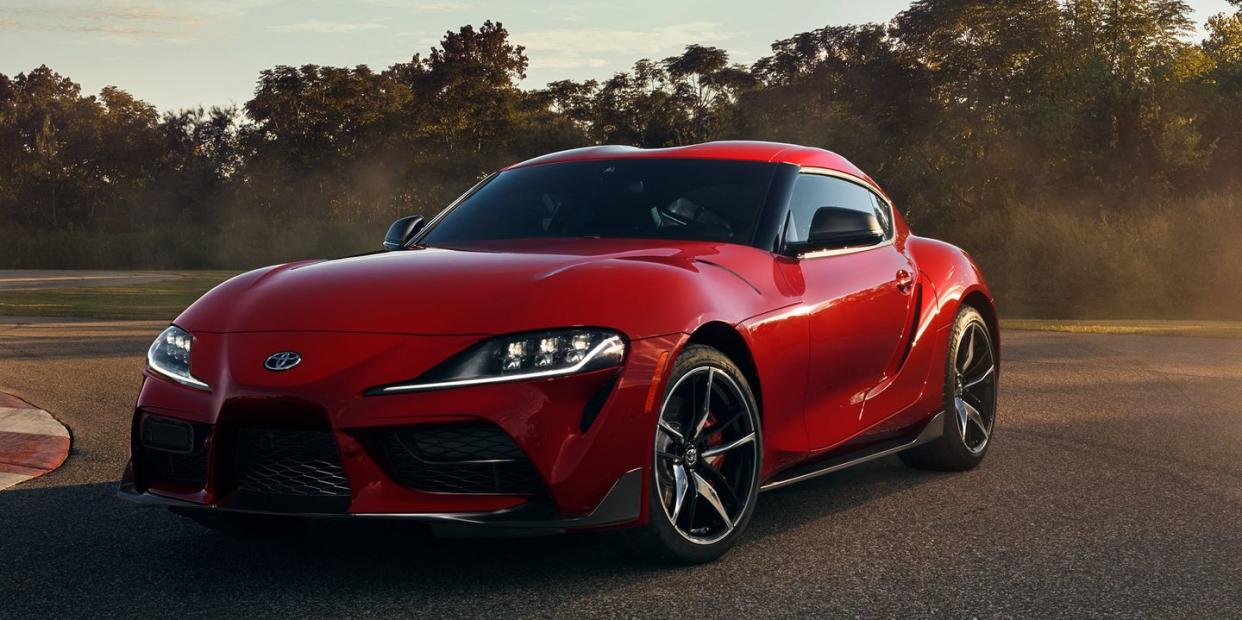
Car lovers have waited years for the return of one of the most beloved nameplates in recent automotive history, the Toyota Supra. Now, we've finally seen Toyota's vision for the car that will become the 2020 Supra, which was built in partnership with BMW.
The revived ride made its debut in January 2019 at the North American International Auto Show in Detroit. This much-anticipated ride comes to Toyota dealerships in the summer of 2019.
Everything you need to know about the Supra, plus our full story on the new car came to be, is below.
Specs
Here, via Road & Track, the important numbers:
Let's hit the big stuff: 335 horsepower, 365 lb-ft of torque from a single-turbo 3.0-liter straight six. An eight-speed torque-converter automatic transmission is the only gearbox available right now, but you knew that. Toyota claims a 0-60 of 4.1 seconds, with an electronically limited top speed of 155 mph, and a curb weight of 3397 pounds.
In Japan, the Supra base model will feature a 2.0-liter four-cylinder engine sourced from BMW, which will come with 194 or 255 horsepower. But that engine option won't be available in the United States. Nor will a manual transmission-at least for now. That eight-speed automatic will make the Supra faster than a stick shift could, but the higher-ups at Toyota know enthusiasts are clamoring for a manual Supra and won't rule out that one could come down the line.
A post shared by Road & Track Magazine (@roadandtrack) on Jan 14, 2019 at 6:47am PST
Prices and Options
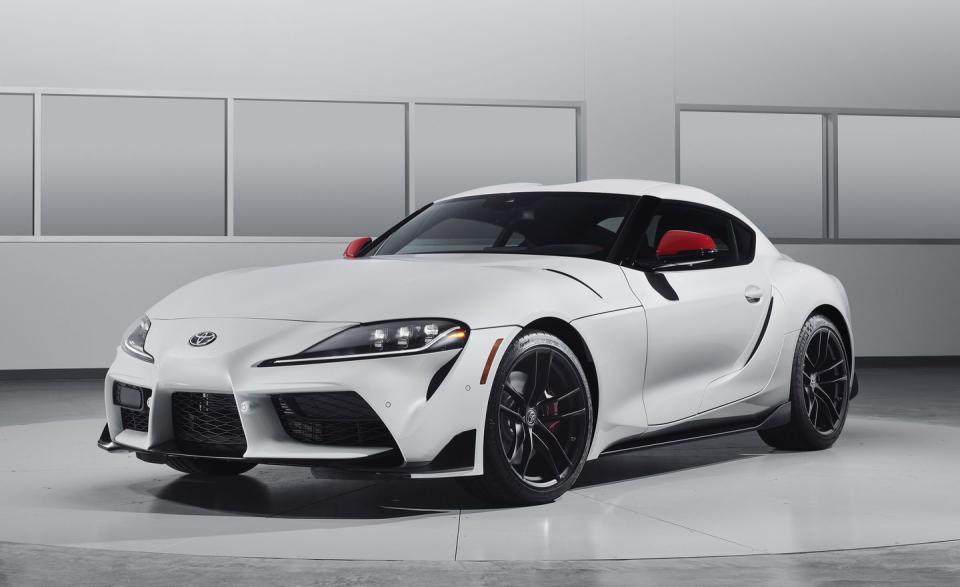
The base 2020 Supra, called Supra 3.0, starts at $50,920. According to Car and Driver, this model includes a number of standard features including a 6.5-inch screen, forward collision warning, and automatic-rain sensing windshield wipers. A JBL audio and nav system is extra, as is the Driver Assist package feature numerous other safety technologies.
The next step up is the Supra 3.0 Premium, starting at $54,920. It includes an 8.8-inch screen, heated seats, and the 12-speaker JBL audio system.
At the high end is the Launch edition, stating at $56,180. Toyota says the first 1,500 cars made in the U.S. will come in this trim, which includes 19-inch wheels, a red leather interior, and a number of other jazzy add-ons.
You Can't Have the First One
Toyota Supra number 1 already sold at auction-for a lot. Global #1 went for a cool $2.1 million at a Barrett-Jackson auction, with the money going to charity.
Below, you'll find our 2018 feature about how Toyota came to the idea of bringing back the Supra by working with BMW.
How the 2020 Toyota Supra Came to Be
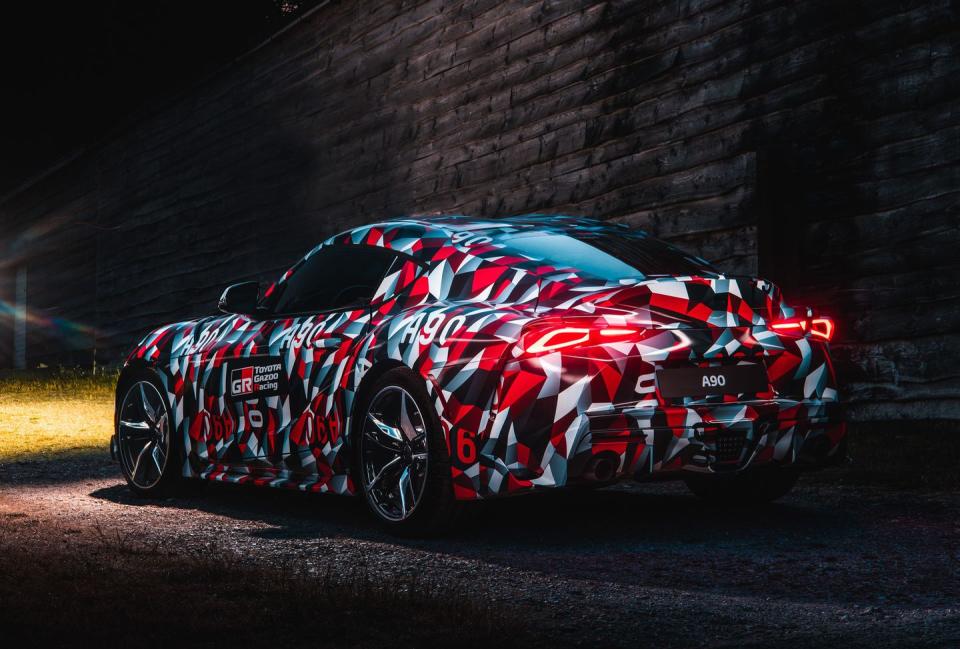
When the Toyota Supra died, it died quietly-banished to its home market of Japan in 2002, left to rot by a parent company more interested in building 4Runners than waning sports cars. But the legend lived on. Values on the used market never sank far because everybody knew the cars would be all-time classics, especially the 1993 to 1998 Supras, their production run for the U.S.
Supra superfans have spent the last 16 years holding their breath, hoping the newest rumor of a revival would be the one that came true. Now their prayers have been answered. Toyota trotted out the 2019 Supra on July 12, 2018, at England's Goodwood Festival of Speed. The A90 Supra, the fifth generation of Supra since 1978, is official. It will debut at the North American International Auto Show in January in Detroit. And weirdly, it's made of a lot of BMW parts.
Japan Meets Germany
This Supra been a long time coming. Normally, it takes about three years to develop a car, but the Supra has been in the oven for seven, said Tetsuya Tada, chief engineer of the A90 project, in an interview posted to Toyota's U.K. website on July 19.
Back in 2012, Toyota and BMW began a joint project to develop a common platform that is now shared between the 2019 Supra and 2019 BMW Z4. Sticking with tradition, the '19 Supra will pack an inline six-cylinder engine under the front hood and run that power through the rear wheels. But because Toyota lacks an I6 of its own, the Japanese car will use Bavarian motivation.
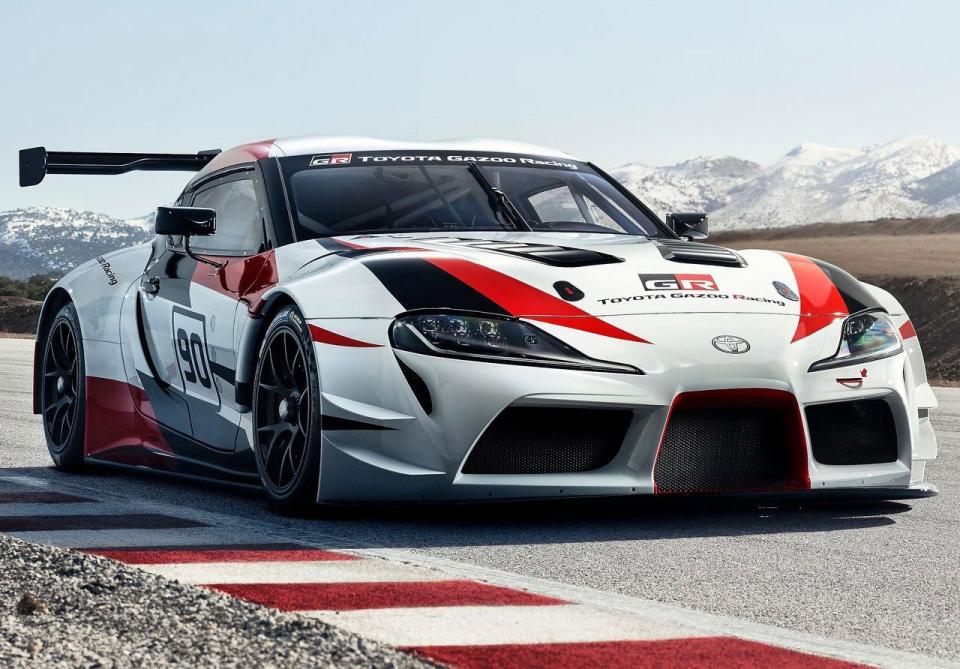
The top engine is a 3.0-liter turbocharged straight six shared with the Z4. Neither company identifies the exact engine publicly, but most onlookers assume it to be the B58 already offered across BMW's lineup in cars from the 2 Series to the 7 Series. There's also a rumored BMW 2.0-liter turbo I4 as a cheaper, base-level option. According to Road & Track, citing a leaked document from German transmission supplier ZF, an eight-speed ZF automatic will do the work behind both engines.
There's no official word mentioning a manual transmission for the Toyota, but the Z4 won't offer one. So if Toyota wants to please the stick-shift people, it'll have to source one itself. R&T reports Masayuki Kai, an assistant chief engineer on the A90, as saying that whether Toyota offers a manual hinges on whether enough consumers demand one. Call us jaded, but “we'll see” tends to mean “no.”
Mojo Back
The new Supra is a big part of Toyota trying to reassemble its cred as a sports car builder. After years of making fine, tossable cars such as the Celica Supra, AE86, and MR-2, Toyota gave up the sports car market at the turn of the new century. Aside from the stumbling final years of the A80 Supra in Japan and the MR-2 Spyder (which Toyota quit paying attention to long before it got the axe in 2007), the aughts saw Toyota without a sports car in production for the first time in most of its fans' lives. Toyota got its head straight with the 2012 Toyota 86/Scion FR-S/Subaru BRZ it codeveloped with Subaru. Tada was chief engineer on Toyota's side of that project, too, so with the new Supra he's responsible for one-upping his own previous design.
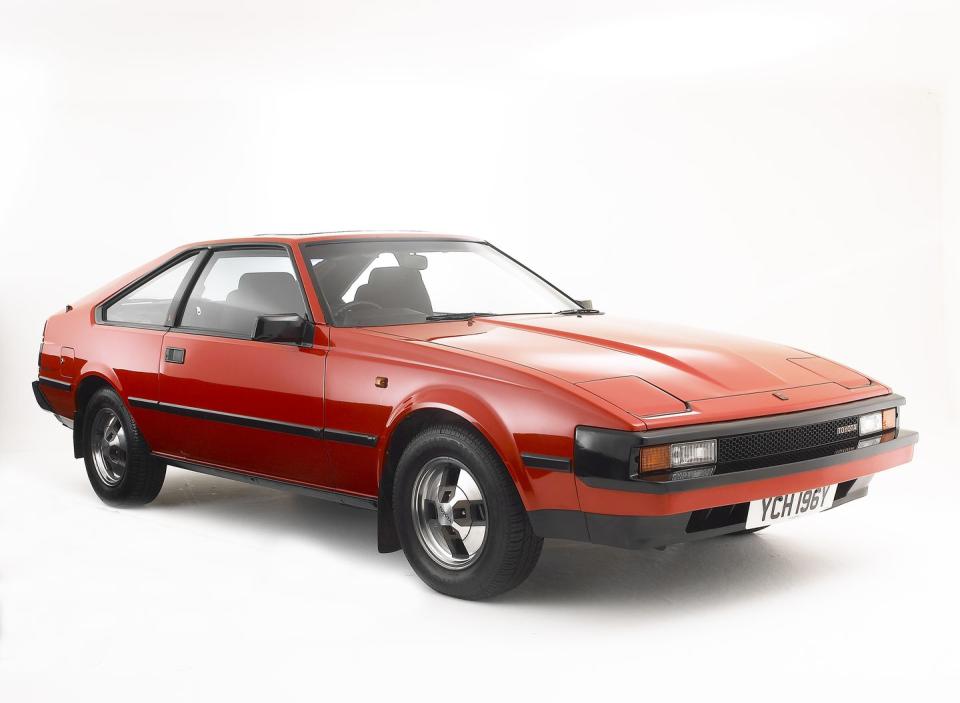
The A90 Supra is wider than its less powerful little brother, the Toyota 86, but has a shorter wheelbase, 50/50 weight distribution, and lower center of gravity. It's also twice as rigid as the 86 and as rigid as the Lexus LFA, Toyota's $375,000 supercar from 2011 to 2012.
Looking through the camouflage wrapping the A90 prototype, one can detect a family resemblance-A80 Supra styling cues mashed up with 86 design. That's not a bad thing at all. The A80 was handsomely designed during a decade that doesn't get the credit for clean auto design that it deserves, and the 86/BRZ is one of the only sports cars on the market that doesn't look like an overly plump Vienna sausage on wheels.
Last of the Breed?
Even though the Supra/Z4 project was borne together, Kai told CNET that the two automakers haven't spoken since 2014. Initial engineering was done jointly as a common starting ground, but from there the two engineering teams seem to have diverged. That's a plus: With five years of development distance between the Supra and Z4, the two cars should have unique personalities, especially compared to the 86/FR-S that was, aside from some minor differences, a carbon copy of the Subaru BRZ.
Watch for Toyota dealerships to make a big fuss when the first Supras roll onto their lots in the first half of 2019. Going back to that Toyota U.K. interview, Tada says the regulations whirling about autonomous driving and electrification are limiting Toyota's ability to make sports cars. “It's getting much more difficult to do that,” he said. “I think the new Supra will be the last present from Toyota to those who enjoy hearing the pleasing sound of a pure petrol engine at high revs.”
Enjoy it while it lasts.
('You Might Also Like',)

